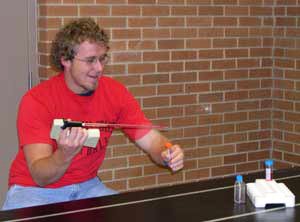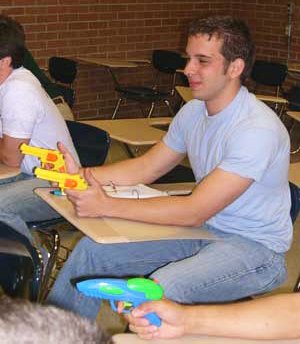Equipped with laminar flow hoods, incubators and inverted microscopes - this facility allows us to train students in a variety of techniques and assays used to study cell proliferation, apoptosis and signaling pathway activation.


While practicing aseptic culture techniques, each student takes a turn transferring media between containers at risk of being "shot" by water guns from on-lookers if a cap is dropped. "God made pinkies for one thing...aseptic technique!" (Dr. Steve Moore)